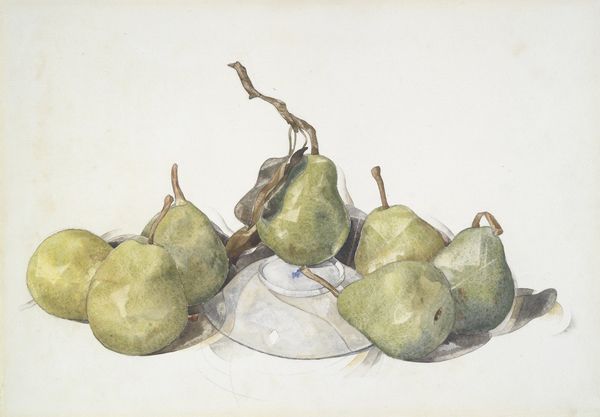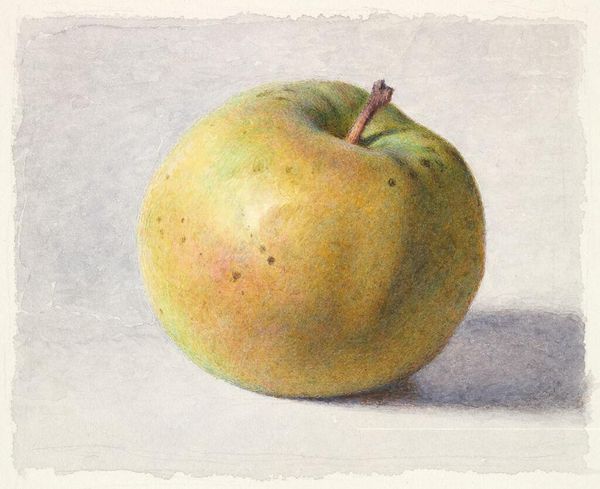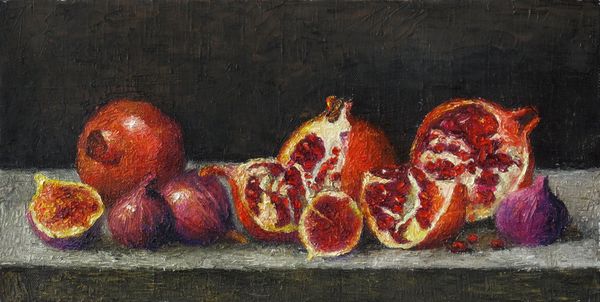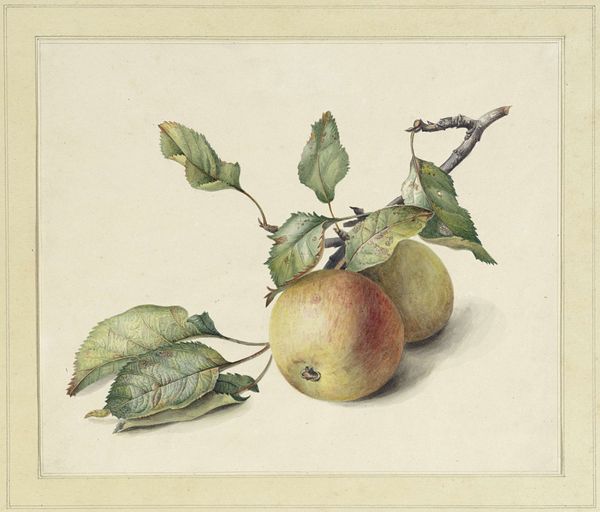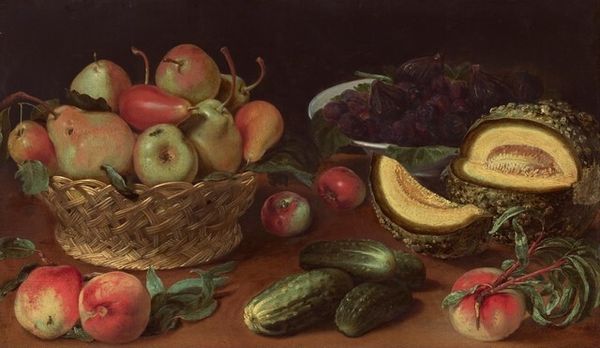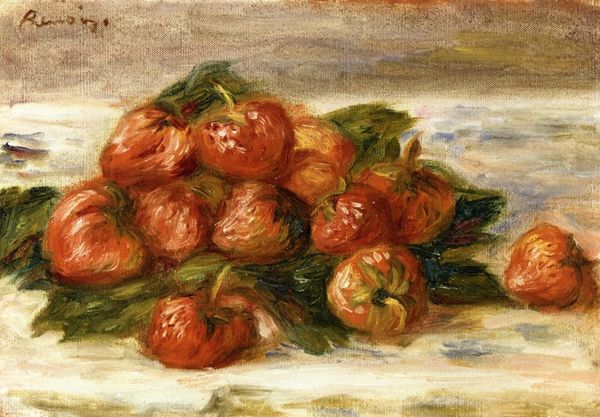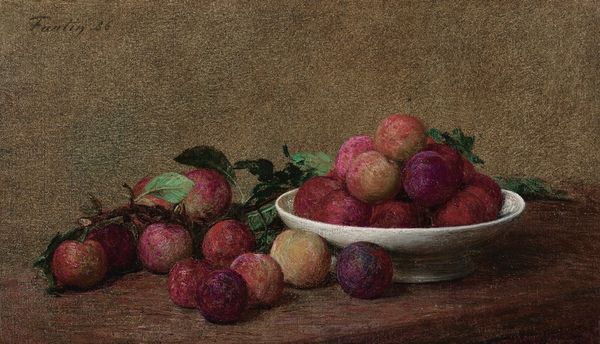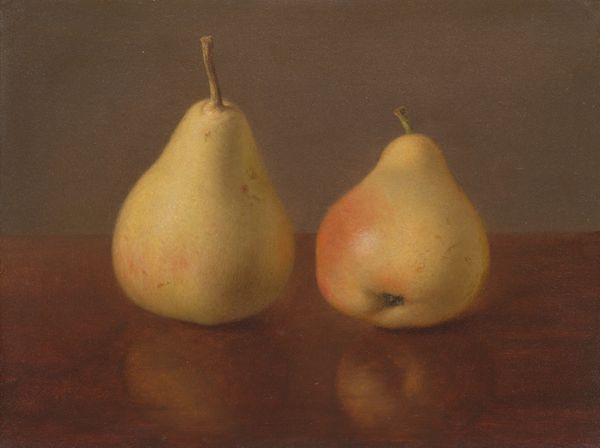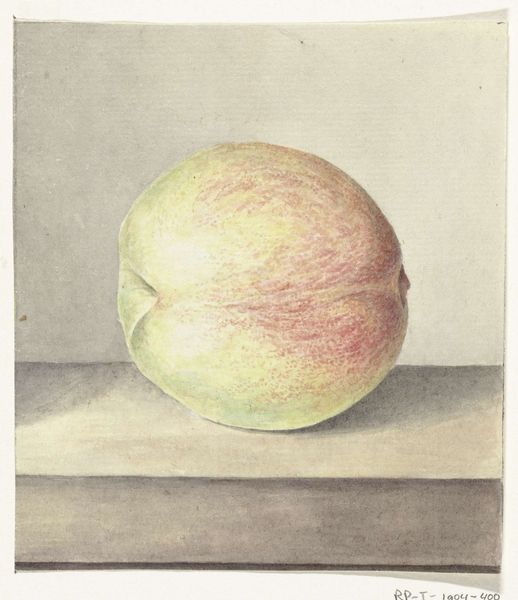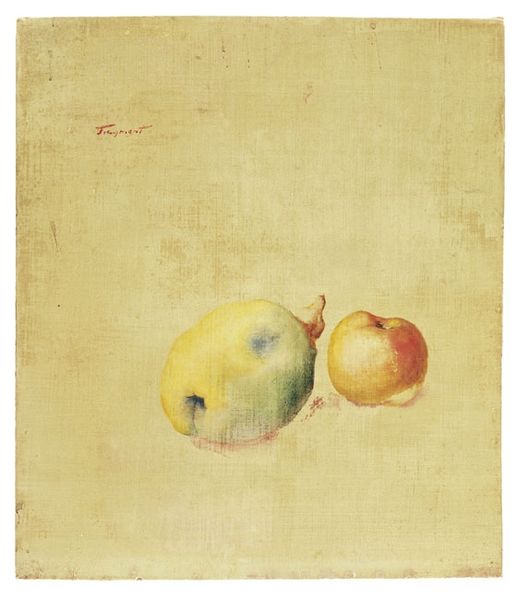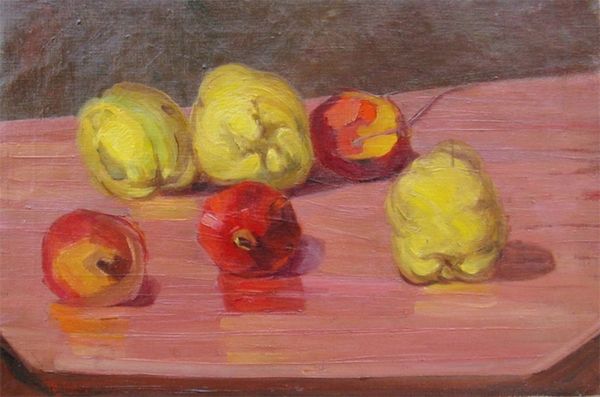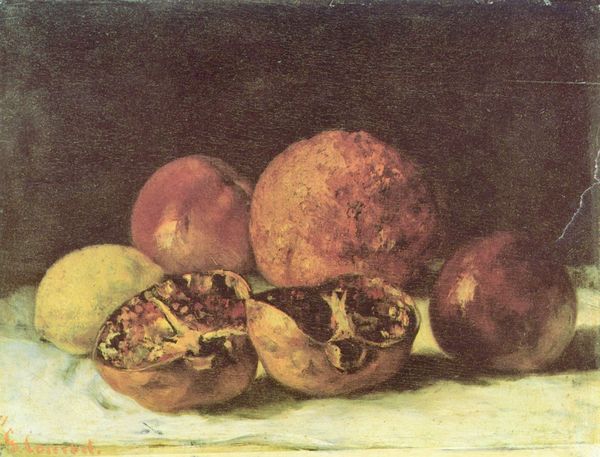
painting, watercolor
#
painting
#
oil painting
#
watercolor
#
fruit
#
watercolour illustration
#
realism
Copyright: Avigdor Arikha,Fair Use
Curator: Here we have "Pomegranate and Quince," a 1978 work by Avigdor Arikha. It's a delicate rendering in watercolor and oil, capturing these two fruits side by side. Editor: It strikes me immediately as unassuming, even quiet. The colors are muted, and the composition so simple. There is such a focus on natural simplicity, a grounded intimacy. Curator: Yes, Arikha was known for his commitment to realism, a "return to sight" as he called it, after a period of abstraction in his own work. Think about the pomegranate—it's such a loaded symbol in art history. Fertility, abundance, even resurrection. And yet, here, it's presented so plainly. Editor: It certainly pushes against the hyper-sexualized and racialized notions of fertility and abundance that we often see in these artistic canons. Stripped of its usual baroque excess, the pomegranate becomes…approachable. Its quiet presence questions art's historical association with patriarchal opulence. Curator: And the quince is just as compelling in its humble form. In Greek mythology, it was sacred to Aphrodite. These fruits carry centuries of artistic, spiritual, and even culinary significance. By painting them together, Arikha invites a dialogue between these traditions, all rendered with remarkable restraint. Editor: But let's also not forget that a still life is rarely just about the objects themselves. Consider the cultural and political climate of 1978. Arikha, an émigré from the Holocaust, was working during a period of heightened social upheaval and reckoning with trauma. It speaks to our fraught relationship to consumption in an increasingly fractured society. Curator: Indeed. The arrangement of the fruit seems so carefully considered; the gentle shadows subtly create a spatial relationship, a dialogue of their own, almost echoing a gentle human interaction. The vulnerability conveyed by such simple means is really affecting. Editor: It asks us to reconsider what we value, how we connect with the tangible world amidst socio-political tensions. A silent protest against the loud superficialities dominating the world beyond the canvas, if you will. Curator: Perhaps that's why, despite the plain presentation, it lingers in the memory. It suggests how we find power, how we construct new narratives, and how we relate with the cultural legacy we share, across centuries and continents. Editor: It reframes our notions of beauty and excess with subtle yet meaningful artistic and socio-political nuances. Definitely some food for thought.
Comments
No comments
Be the first to comment and join the conversation on the ultimate creative platform.
